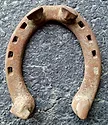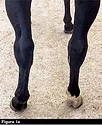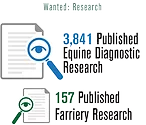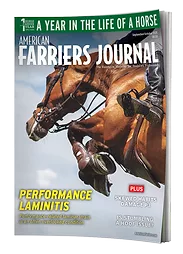Advertise Follow Us
American Farriers Journal

View Archived Issues
January/February 2018
Volume: 44
Edition: 1
American Farriers Journal is the “hands-on” magazine for professional farriers, equine veterinarians and horse care product and service buyers.
-
Table Of Contents
Table Of Contents
What's This? Icy Traction
This horseshoe was instrumental in helping New York farmers during the "ice age."Read MoreBook Review: January/February 2018
Evaluating Radiographs For Equine Foot Management By Pete HealeyRead MoreSimple And Straightforward Shoeing Helps Young Horse Recover
Texas farrier Virgil Conde discusses his strategy for the footcare of a horse that sheared off part of its hoof wallRead MoreShoeing for a LivingFreedom is the Nature of His Business
Oregon farrier molds his practice to provide quality hoof-care, while enjoying the High Desert of the Pacific NorthwestRead MoreDefining What Is And Isn’t Natural Balance
British farrier David Nicholls gives a history of how Natural Balance led to a more definitive system of hoof mappingRead MorePhysiology, Foot Morphology And Health In The True Wild Horse
Researcher finds laminitis and surprising hoof problems with Przewalski’s horseRead MoreDon’t Let The Hinds Become An Afterthought
English farrier explains how he assesses a horse behind for conformation and balanceRead MoreThe Beauty of Bold
Under the right circumstances, using this section could benefit certain horses that you work withRead MoreUnderstand Drafts' Farriery Needs Before Picking Up The Foot
Tips and advice to make trimming and shoeing easier for you and the horseRead MoreShow Jumper Shoeing In Norway
Farrier Aksel Vibe shares some thoughts on uncomplicated work while shoeing two jumpersRead MoreStrategies To Avoid Backyard Horse Issues
Farriers share their techniques for dodging common foot problems that tend to pile up with their novice ownersRead MoreEnter The Summit Mail-In Forging Exercise
Build this shoe for a FREE T-shirt and your chance to win a belt buckleRead MoreWhat Were Farriers' Online Footcare Interests in 2017?
EDUCATION Here’s a look at the “most viewed” content during the past year that appeared on the American Farriers Journal’s digital media platformsRead MoreRecurrent Solar Abscesses Result From Keratoma
Vermont farrier and equine veterinarian resolve Quarter Horse’s 4-year struggle with lamenessRead MoreGroups Aim to Boost Hoof-Care Research
AFA Research Committee offers insight to help improve the chances for funding a projectRead MoreResearch Journal: January/February 2018
The information, ideas and opinions expressed are those of the author and do not necessarily represent those of the United States Department of Agriculture.Read More$300 for a Shoeing Job?
Editor’s note: Using an inflation calculator, the 1899 rate for the four new shoes and two pads would grow from $5 to nearly $150 in today’s buying power.Read More -
Featured Articles
Featured Articles
Shoeing for a LivingFreedom is the Nature of His Business
Oregon farrier molds his practice to provide quality hoof-care, while enjoying the High Desert of the Pacific NorthwestRead MoreWhat Were Farriers' Online Footcare Interests in 2017?
EDUCATION Here’s a look at the “most viewed” content during the past year that appeared on the American Farriers Journal’s digital media platformsRead More - Digital Edition
-
Online Extras
Online Extras





















